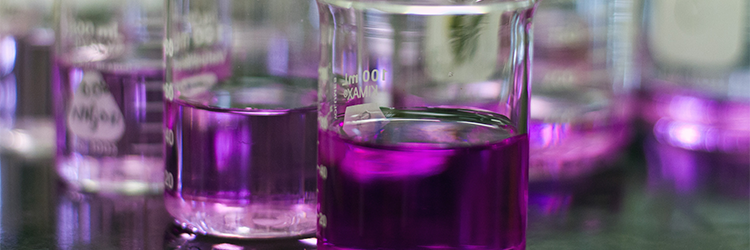%T or % Transmittance is related to absorbance and is effectively the amount of light that isn't absorbed by a solution at a particular wavelength and path length. So, if all the light passes through a solution without any absorption, then absorbance is zero, and %T is 100%. If all the light is absorbed, then %T is zero, and absorption is infinite.

Palintest Check Standards are traceable reference materials defined in terms of %T at a particular wavelength and are ideal in confirming your photometer is conforming to specification in the field.
Determination of the permanganate value (PV) for sewage and effluent can help indicate the oxygen requirement of waste streams during treatment and prior to discharge.

It represents the concentration of material in the waste stream that is oxidisable by potassium permanganate under acidic conditions. It is often represented as the quantity of oxygen consumed per litre of water (mg/L O2 or ppm O2).
As with COD, the use of an oxidising agent and acidic conditions is designed to accelerate the chemical and microbial oxidation of organic material that occurs in natural waters.
It cannot be used as a definitive measure of theoretical oxygen demand or the total organic content as many compounds are only partially oxidised during the test and therefore the full COD test is preferable where possible.
Permanganate values can be used directly to quantify water quality or can be converted to provide an estimate of the COD, BOD or TOC values.
The permanganate value test can be carried out with our sewage effluent kit.
What is KH and GH in Aquarium Water Test Kits?
In aquariums and fish farms, you need to be able to differentiate between Carbonate Hardness (KH) and Total Hardness (GH).
Carbonate hardness (KH or CH) refers to the ability of the water to maintain a stable environment and subsequently, the health of fish. The carbonate hardness is the 'buffering' ability of the water. To determine this on a photometer you need Palintest Alkalinity tablets, known as Alkaphot (part code AP188).
General hardness (GH) refers to the 'hardness' of the water caused by calcium and magnesium ions. Different aquatic species prefer different environments, some prefer 'hard' water and some prefer 'soft' water. The hardness of your water is often dictated by the source of the water. If it's from groundwater it tends to be harder, if it's from surface water it tends to be softer. To determine this on a photometer you'll need our Hardicol reagent (part code AP254).
Sometimes the units dH are used. This means "degrees hardness''. Most test kits define results in terms of ppm CaCO3 means 'parts per million equivalent to that of calcium carbonate' - it doesn't mean that the hardness is in this form.
1 unit dH equals 17.8 ppm as CaCO3.
To order your reagents to test your aquarium, browse our range of instrument platforms in the Photometers section, and view the relevant reagents for these tests.
The Instachlor (Dichloroisocyanurate or 'Di-Chlor') product is fully compliant with current European Regulations (namely BS EN12931) and also with the US NSF Standard 60- Drinking Water Treatment Chemicals.
It was previously registered as approved with the Drinking Water Inspecorate (DWI) but under legislation changes that occurred in 2000 it was removed from the DWI listing as it was already subject to the BS EN approval. This removal from the DWI list did not revoke its approval with the DWI but merely reflected the fact it was approved elsewhere.
Are Palintest's chlorine tablets covered under the Biocidal Products Regulations (BPR)?
Yes!
The active ingredient of Palintest’s Instachlor tablets, Sodium Dichloroisocyanurate Anhydrous (also known as Troclosene Sodium and NaDCC), is sourced from suppliers listed in the ‘Article 95 list’ of the Biocidal Products Regulation ((EU) No 528/2012 (BPR)) and applies to product types PT2, PT3, PT4, PT5 and PT11.
The active ingredient of Palintest’s Steadichlor tablets, Calcium Hypochlorite, is sourced from suppliers in the ‘Article 95 list’ of the Biocidal Products Regulation ((EU) No 528/2012 (BPR)) covering all product types listed for the active ingredient.
From 1 September 2015, a biocidal product cannot be made available on the EU market unless either the substance supplier or the product supplier is included in the Article 95 list for their active substance in the relevant product type.